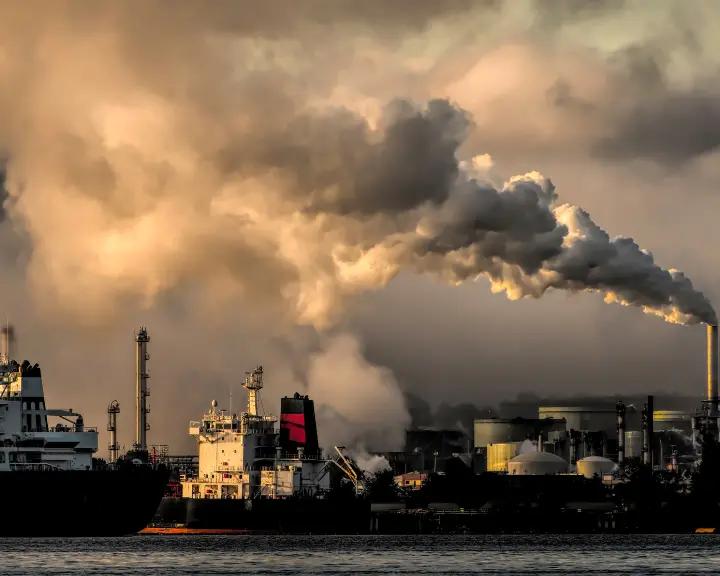Seamlessly integrate your TMS, ERP or any other platform in your ecosystem with your customers, partners, or software vendors, so you can offer CO2 data and stay ahead of SEC regulations.
Carbon Monitoring
As the Earth inches ever closer to a climate catastrophe in the form of a runaway greenhouse effect, more companies, and global institutions are investing in carbon monitoring initiatives to assess the impact of carbon emissions and global warming at large. But what is carbon monitoring, exactly? And what does a carbon monitoring initiative look like? It’s essentially exactly what its name implies – the monitoring of carbon dioxide (CO2) emissions by source for more efficient environmental supply chain management. While numerous natural sources of greenhouse gases escape the earth in the form of volcanic eruptions and ocean outgassing, the overwhelming majority of client scientists and researchers agree that human activities are the most damaging and significant contributor to Earth’s atmospheric CO2 levels.
The problem is that CO2 is what’s known as a ‘greenhouse gas’ – gaseous molecules that trap heat from the sun within the Earth’s atmosphere, causing the Earth’s average temperature to increase. A runaway greenhouse effect, then, is what happens when the volume of greenhouse gases becomes insurmountable and heat from the sun no longer has a means of escaping the Earth’s atmosphere. Planetary scientists generally hypothesize that a runaway greenhouse effect is what transformed one of our nearest terrestrial neighbors, Venus, into the scalding-hot environment it is today.
Carbon monitoring is beneficial because it allows researchers to understand the volume of carbon emissions that are being pumped into the Earth’s atmosphere as a result of industry and other contributors. Once the most impactful sources are detected and understood, measures can be taken to develop cleaner, more renewable sources of energy, among other carbon emissions-reducing initiatives.
Supply chain sustainability initiatives and the future of the planet are linked – the global networks that human beings have developed and maintained for hundreds of years have come to rely on unsustainable practices. Without consistent and concerted efforts from the entities contributing most, the planet may venture down a path from which there is no return. And we only need to affix our telescopes toward Venus to see the end result of a runaway greenhouse gas effect.
Freight forwarders are responding to increased demand from customers and the government and beginning to invest in carbon reporting software. Read the full report in FreightWaves about their priorites for technology investments.
Download FreightWaves' ResearchCarbon Monitoring System
Average carbon emissions per company data can shine a light on some of the most significant contributors of carbon emissions. Recent indicates that “100 active fossil fuel producers including ExxonMobil, Shell, BHP Billiton, and Gazprom are linked to 71% of industrial greenhouse gas emissions since 1988.” Other carbon emissions statistics from the Carbon Disclosure Project (CDP) include the fact that more than “half of [the] global industrial emissions since 1988 can be traced to just 25 corporate and state producers.”
These figures may seem bewildering – after all, how can only 25 corporate or state entities produce more than half of the world’s industrial emissions? Thankfully, however, if the top 25 contributing entities put forth a genuine effort to reduce the use (or production) of harmful fossil fuels as well as their greenhouse gas emissions – whether it’s CO2 or methane or something else – then human beings may stand a chance at curtailing the sheer volume of carbon emissions our industries release into the atmosphere.
A carbon monitoring system is more than a mere sampling of the atmosphere and counting the molecules – an effective carbon monitoring system requires a sprawling network of accurate measurements and assessments from locations and known sources of carbon emissions – both natural and human-made – around the globe. Both NASA and the European Space Agency have ongoing missions involving satellite CO2 monitoring.
Tracking supply chain carbon data is crucial to understanding the level of impact particular processes may have on the environment and atmosphere, and organizations can develop solutions to curtail excessive emissions of harmful greenhouse gases. For instance, monitoring carbon emissions within supply chain logistics could provide researchers with key information about how to prioritize their sustainability efforts. Are there ways to develop replacement technologies or solutions that would be more friendly to the environment without significantly disrupting supply chain operations, for example?
Carbon Footprint Monitoring
If you are wondering how to monitor carbon emissions, you can download a carbon footprint tracking app on your phone that will help your personal carbon monitoring endeavors. Utilizing a carbon footprint monitoring app is basically like having a carbon emissions calculator in your pocket. They can track carbon emissions from cars you drive, the electricity that you use, and other ways your daily activities may release carbon dioxide or other harmful greenhouse gases into the atmosphere.
For larger organizations, carbon footprint tracking software can help provide invaluable insight into where to focus additional sustainability efforts. There are also numerous tax incentives and other credits for organizations that commit to more sustainable practices. By closely monitoring your organization’s carbon footprint, you can ensure that progress is being made so that sustainability targets can be met or exceeded.
Global CO2 emissions by sector 2021 – according to the International Energy Agency (IEA) – saw total greenhouse gas emissions rise to their highest-ever level. The IEA report also found that “CO2 emissions from energy combustion and industrial process accounted for close to 89% of energy sector greenhouse gas emissions in 2021.” It can be difficult to fathom the volume of emissions at such drastic scales, but it’s thousands of megatons (Mt) – 1 Mt is equivalent to one million metric tons.
While, yes, individual car use and running household appliances contribute in some sense to the overall problem of carbon emissions in Earth’s atmosphere, it’s overwhelmingly a result of industrial processes, including manufacturing, freight shipping, and fossil fuel extraction. Because of this, industry leaders and some of the largest organizations in the world must act as the catalysts of change to invest in greater sustainability from end to end while also investing in sources of cleaner, renewable energy.
Real-Time Carbon Emissions
Some of the more advanced technology in carbon footprint tracking has led us to real-time carbon emissions tracking capabilities. Real-time monitoring, or even near-real-time monitoring, can provide quick solutions and more accurate data. Near-real-time global gridded daily CO2 emissions data can help researchers, scientists, and engineers develop greater and more efficient sustainability initiatives.
According to the Global Carbon Project (GCP), the three countries that contributed most significantly to carbon emissions in 2021 (the People’s Republic of China, the United States, and India) combined to expel nearly 20,000 Mt of CO2 into the Earth’s atmosphere. In order to slow down or halt such drastic figures, investors in sustainability are going to have to act quickly with a real sense of urgency. Each year we miss our targets for reducing emissions, and we draw ever nearer to a runaway climate catastrophe.
CO2 emissions by country 2021 – the greatest contributors to global carbon dioxide emissions were China, the United States, India, the Russian Federation, Japan, Iran, Germany, Saudi Arabia, Indonesia, and South Korea. Despite 194 parties signing and entering into the Paris Climate Agreement, it’s clear that the world still has a long journey ahead of us on the road to reducing greenhouse gas emissions.
For supply chain companies and even small businesses that may rely heavily on the logistics provided by supply chains, accumulating more data about carbon emissions can help researchers and engineers develop better methods of reducing the harmful impacts industrialism can have on local and global ecosystems. Every sustainability initiative, no matter how small, helps, and it’s going to require changes and sustainability overhauls at every level – all the way up to the top. The time for half-measures has long passed.
Carbon Data Integrations
Are global CO2 supply chain emissions still rising? Only time and consistent, accurate measurements will tell. In the meantime, carbon data integrations are being developed and utilized to drive greater sustainability initiatives within supply chain networks. By making use of carbon data API, solutions are being developed at every level within the supply chain. Such ingenuity is necessary because of how complex supply chain networks are and how many organizations and components are involved at any given moment.
Trends in global CO2 and total greenhouse gas emissions (2021 report) indicated that CO2 emissions rose by 6% compared to the previous year – which had seen a marginal decline due to the ongoing Covid-19 pandemic. Global greenhouse gas emissions 2022 levels are expected to rise to 58 gigatons (GT), according to the Brookings Institution, which would break yet another record as the greatest levels recorded. With CO2 levels expected to continue to rise, the urgency to develop cleaner energy sources and more sustainable practices grows ever more intense.
Even as industries continue to expand and more developing countries strive to see their power demands met, we must all strive to reduce carbon emissions whenever possible. While we won’t be able to make drastic changes overnight, even the smallest creatures can have the greatest impact, so every effort toward actualizing a more sustainable future is invaluable.
Chain.io can help organizations transition to greater supply chain sustainability. By providing greater supply chain connectivity, organizations can divert more resources toward sustainability initiatives and ethical business practices. Increased supply chain visibility can also illuminate your organization’s environmental impact, and you can adapt where necessary to minimize your business’s negative impacts on local ecosystems and the planet’s climate.







